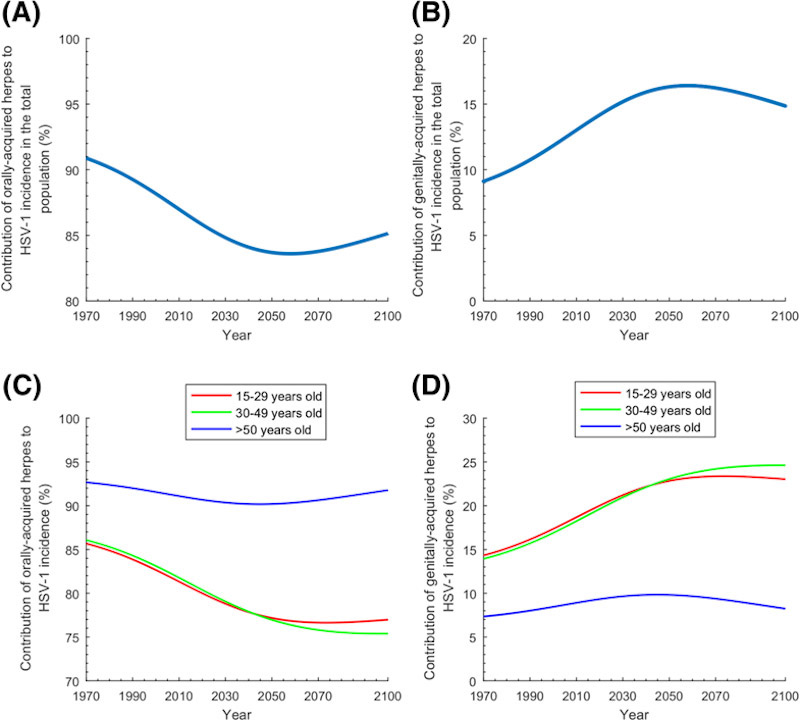Researchers at Qatar University (QU) and Weill Cornell Medicine-Qatar (WCM-Q) have described an intriguing and rapid evolution of the herpes simplex virus type-1 (HSV-1) epidemic in the United States (US), with less infection in childhood but more in adulthood, and less oral infection but more genital infection.
Key scientific findings of the study:
- HSV-1 infection in the US is transitioning from being an oral infection typically acquired during childhood, to a sexually transmitted infection and a major cause of first-episode genital herpes among young adults.
- The number of new HSV-1 infections will persist at 3 mn new infections every year. Of this total, close to half a million will be genital infections, mainly through oral-genital contact and leading to genital herpes.
- Young adults, specifically women, will be most affected with 25% of new cases among them being genital infections.
The results explained:
HSV-1 is a highly contagious virus and one of the most widespread infections globally. It is normally transmitted orally during childhood, leading to blisters and lesions around the mouth known as oral herpes. Recent data from several countries, however, showed that HSV-1 can also be transmitted sexually, through various sexual practices, leading to genital herpes and genital ulcer disease.
Dr Houssein Ayoub, lead author of the study and assistant professor in the Department of Mathematics, Statistics, and Physics at QU, said:
It was striking for us to see this major shift in HSV-1 transmission patterns, and how this infection is affecting different age groups very differently. While oral herpes is declining rapidly for children, genital herpes is increasing steadily for young adults.’
The QU and WCM-Q study, published in the prestigious journal ‘BMC Medicine’, developed a sophisticated mathematical model to quantitatively characterise the level and trend of the HSV-1 epidemic in the US. The study indicated that HSV-1 infection is undergoing a more subtle transition than previously thought, with this infection propagating through four different modes of transmission in the population, and affecting different age cohorts in different ways. Oral-genital contact, in particular, was found to be playing an important role in infection transmission for young adults, with 25% of infections among them being genital and leading to genital herpes.
The study estimated that there are 3 mn new HSV-1 infections every year, a level that will persist for several decades. Of this total, close to 500,000 will be genital infections, mainly through oral-genital contact. HSV-1 will persist as a major cause of first-episode genital herpes among youth in the US for decades to come, surpassing the contribution of that of HSV-2, a related infection transmitted mainly through sexual intercourse. HSV-2 has been historically the main cause of genital herpes until present times.
Hiam Chemaitelly, the second author of the study and senior epidemiologist at WCM-Q, added:
The increase in genital herpes due to oral-genital contact is of particular concern, as this is affecting young adults, mainly women, who have to endure significant psychosocial and sexual consequences once they discover these genital blisters, often shortly after their sexual debut.’
Despite these increasing rates of genital herpes, the study indicated steep declines in oral herpes in children. The study also predicted that the fraction of the population who will carry the infection will decline with time, and this decline will be most pronounced by 2050.
Dr Laith Abu-Raddad, the Principal Investigator of the Study and Professor of Healthcare Policy and Research at WCM-Q, concluded:
These findings demonstrate the criticality of accelerating HSV-1 vaccine development to control transmission and to prevent the medical and psychosocial disease burden that is emerging from this infection.’
The study ‘Characterising the Transitioning Epidemiology of Herpes Simplex Virus Type 1 in the United States: Model-Based Predictions’ was conducted through a collaboration between QU and WCM-Q with funding from the Qatar National Research Fund, a Qatar Foundation member, through the National Priorities Research Program (NPRP 9-040-3-008).
For more information or to read the study click here.







